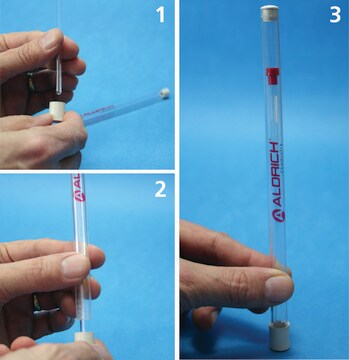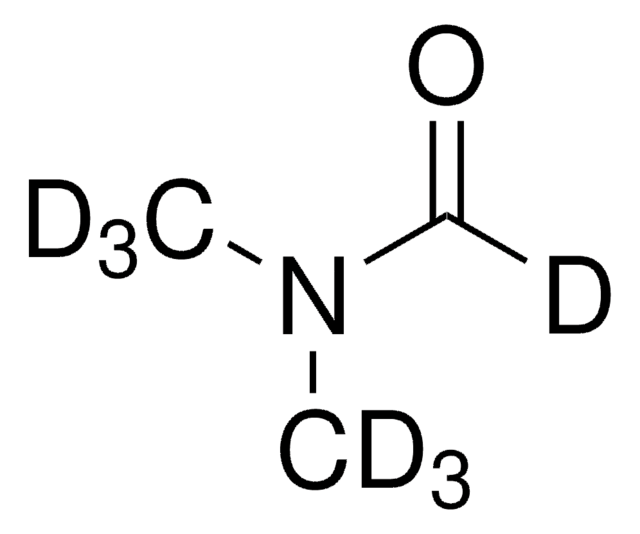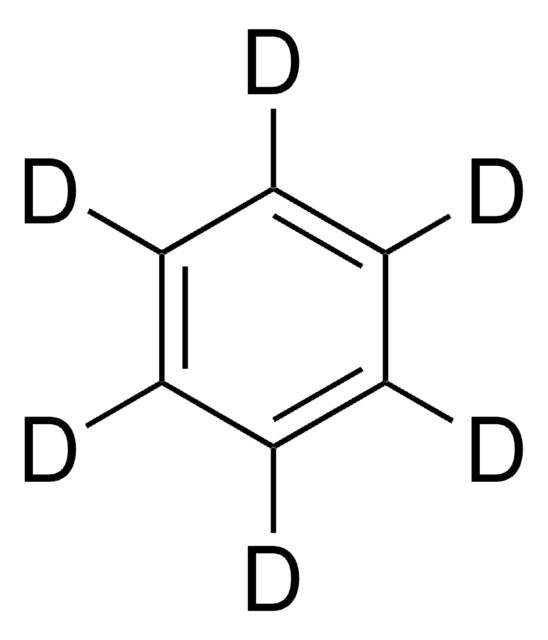Kluczowe dokumenty
570699
Chloroform-d
≥99.8 atom % D, anhydrous
Synonim(y):
Deuterochloroform
About This Item
Polecane produkty
klasa czystości
anhydrous
Poziom jakości
czystość izotopowa
≥99.8 atom % D
Próba
≥99.00%
Postać
liquid
metody
NMR: suitable
zanieczyszczenia
<10 ppm water
współczynnik refrakcji
n20/D 1.444 (lit.)
tw
60.9 °C (lit.)
mp
−64 °C (lit.)
gęstość
1.500 g/mL at 25 °C (lit.)
przesunięcie masy
M+1
ciąg SMILES
[2H]C(Cl)(Cl)Cl
InChI
1S/CHCl3/c2-1(3)4/h1H/i1D
Klucz InChI
HEDRZPFGACZZDS-MICDWDOJSA-N
Szukasz podobnych produktów? Odwiedź Przewodnik dotyczący porównywania produktów
Opis ogólny
Zastosowanie
Polecane produkty
Hasło ostrzegawcze
Danger
Zwroty wskazujące rodzaj zagrożenia
Zwroty wskazujące środki ostrożności
Klasyfikacja zagrożeń
Acute Tox. 3 Inhalation - Acute Tox. 4 Oral - Carc. 2 - Eye Irrit. 2 - Repr. 2 - Skin Irrit. 2 - STOT RE 1 Oral - STOT SE 3
Organy docelowe
Central nervous system, Liver,Kidney
Kod klasy składowania
6.1D - Non-combustible acute toxic Cat.3 / toxic hazardous materials or hazardous materials causing chronic effects
Klasa zagrożenia wodnego (WGK)
WGK 3
Temperatura zapłonu (°F)
does not flash
Temperatura zapłonu (°C)
does not flash
Środki ochrony indywidualnej
Eyeshields, Faceshields, Gloves
Wybierz jedną z najnowszych wersji:
Masz już ten produkt?
Dokumenty związane z niedawno zakupionymi produktami zostały zamieszczone w Bibliotece dokumentów.
Klienci oglądali również te produkty
Nasz zespół naukowców ma doświadczenie we wszystkich obszarach badań, w tym w naukach przyrodniczych, materiałoznawstwie, syntezie chemicznej, chromatografii, analityce i wielu innych dziedzinach.
Skontaktuj się z zespołem ds. pomocy technicznej







